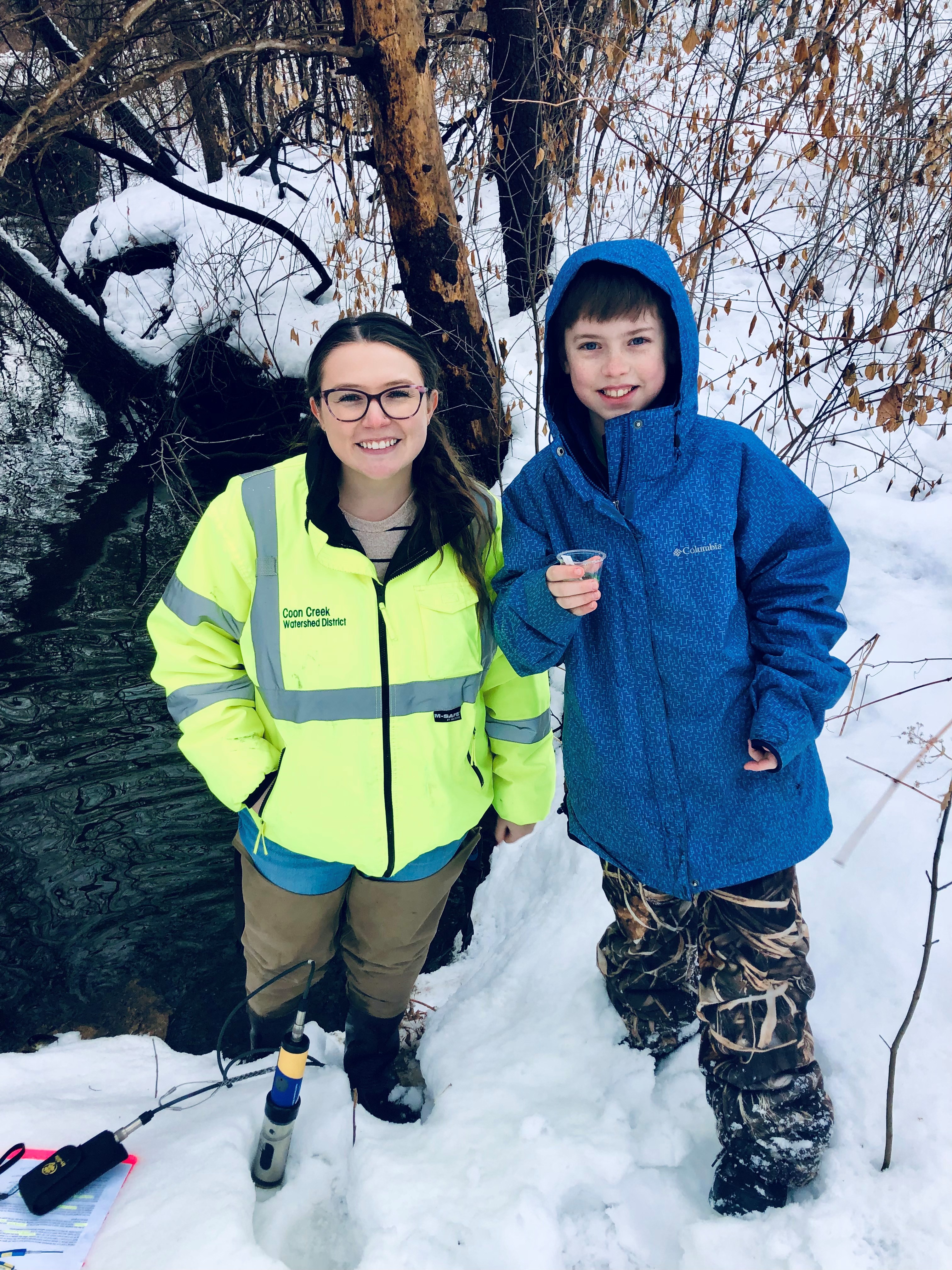Alice, a mom of three kids in central Minnesota, got started with the Izaak Walton League’s Salt Watch program last winter – and her family is already making a difference in their community.
Growing up, Alice always had an “environmentally forward family.” More recently, while raising her own family near Minneapolis, Alice learned about the Adopt-a-Drain program. Through that program, people can adopt a storm drain online, name
it, and help the environment by keeping the drain clear of debris.
Alice pitched the program to her family. “We’re not going to get any pets,” she told them, because their city home isn’t a great place for animals, “but you can adopt as many drains as you want!” The kids were convinced.
The Adopt-a-Drain program was run by the Coon Creek Watershed District, which offers regular presentations on other volunteer opportunities. That’s how Alice found out about Salt Watch, a program of the Izaak Walton League that empowers volunteers
to test their local waterways for salt pollution.
Salt pollution can come from many sources; the biggest source is road salt application. Salt is toxic to plants (and to animals in excessive quantities), and it can pollute drinking water when it runs off into streams. Through Salt Watch, volunteers dip
test strips into waterways to measure concentrations of chloride, which is a component of all kinds of salt. When Alice’s son Vincent heard about this community science program, he knew it would be the perfect project for his school science
fair.
Like a true scientist, Vincent focused his curiosity into a specific research question. Which has higher salt concentrations, Vincent wondered, ditches or streams? Using the materials provided by Salt Watch, he could find out.
With his mom and two siblings in tow, Vincent visited both ditches and streams all over his community. At each one, he used the Salt Watch test strips to measure salt pollution. Then he reported his results to the same database used by Salt Watch volunteers
all over the country.
 Vincent doing field research with Abby Shea, an employee of the Coon Creek Watershed District.
Vincent doing field research with Abby Shea, an employee of the Coon Creek Watershed District.
Alice remembers spending “a lot of weekends together, roaming the city and watershed.” Especially memorable: a chloride reading of 750 parts per million (ppm)! To put that in perspective, normal chloride levels are less than 100 ppm.
While that was the highest reading the family found, it wasn’t the only test result that was well above normal. “Vincent realized pretty quickly how most of the watershed here, that leads into the Mississippi, has higher salt,” said
Alice.
After a dozen chloride tests and hours of research on creeks and watersheds, Vincent had enough evidence to answer his research question. He concluded that overall, ditches and streams had about the same amount of chloride pollution. What really made
a difference for salt concentrations was whether the waterbody was close to parking lots or roads.
The fifth-grader started writing his research report. Though it took a long time, because he is still learning to type, Vincent persisted because he knew it was important to share his findings.
After completing the 10-page report, Vincent presented the results of his study at the school science fair. He shared that “one of the things [he] learned is that it only takes a teaspoon … of salt to permanently pollute five gallons of water.”
To show his classmates just how little salt that is, Vincent put one teaspoon of salt into five gallons of distilled water, poured the water into cups, and invited people to taste it. Vincent recalls that only one person at the whole science fair
said they could taste the tiny bit of salt in their water!
This experience has made Vincent incredibly passionate about conservation – and eager to learn more about the impacts of salt pollution. With his Boy Scout troop, he helps bees in his area by building beehives, and he started wondering if there
was a connection between salt pollution and bee health. That new research topic brought him to a college professor, who taught him more about bee health and salt pollution. This professor said the connection is still being studied by grown-up scientists.
Meanwhile, Vincent is proving that young people can do important science too. He has big plans for Salt Watch monitoring, beehive restoration, and top-notch science projects!
Inspire a young scientist or conservationist in your life – get started with Salt Watch now.
Top photo: Vincent presents his research at the school science fair.